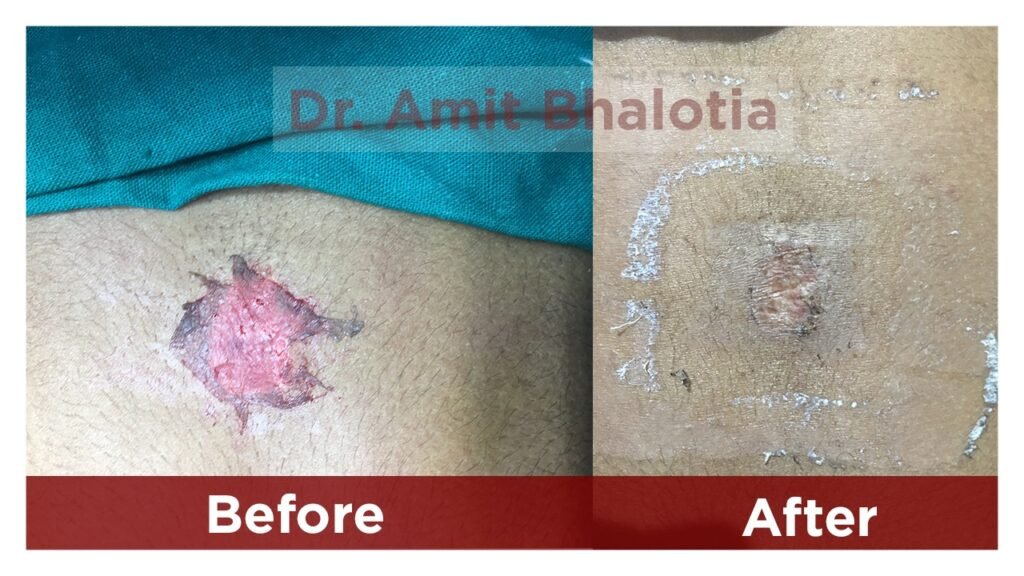Vitiligo Surgery
Vitiligo is a chronic skin condition that causes areas of the skin to change color. It is an autoimmune disorder that occurs when the body’s immune system attacks and destroys cells that produce pigments (melanocytes) leaving the affected area of the skin colorless. Vitiligo most often affects the face, elbows, knees, hands and feet. The condition is more noticeable in people with darker skin tones.
Link with other autoimmune diseases:
Vitiligo is often associated with other autoimmune diseases and patients are advised to be aware of symptoms for diseases such as thyroid insufficiency, diabetes, vitamin B12 deficiency and disorders of adrenal glands.
It is not considered as a hereditary disorder, but upto 25% of patients with vitiligo usually have a family member who also has vitiligo. It can occur in adults and children of any skin tone irrespective of racial and ethnic background. Genes that are associated with autoimmune diseases have been found in higher frequency in vitiligo patients.
The doctor will have a detailed consultation with you with regards to all of the above and advise further.
Common treatments for vitiligo include topical medications and light therapy that can be used in combination to restore the pigments. Now, newer surgical techniques are being introduced that have been shown to have a high success rate in restoring pigments to the affected areas. The doctor can decide to use a combination of therapies i.e. surgery on one area of the body and another therapy for other affected areas.
Dr Amit Bhalotia is an expert in all of these techniques and has performed them with good results.They include:
Skin Grafting
- Normal skin is used as donor tissue and grafts are surgically transplanted on areas of vitiligo. The new skin grafts, once taken, start producing pigments.
- Patients who are candidates for this procedure must have stable vitiligo, or vitiligo that has not changed for atleast six months.
- This procedure can be used for patients with limited areas of vitiligo.
- Skin grafting has a high success rate, i.e. up to 80 to 90 percent in most cases.
Melanocyte Transplantation
- In this procedure, melanocytes and keratinocytes are obtained surgically under local anaesthesia from the patient’s normal skin and grown in an artificial medium in a culture lab overnight. For transfer, the top layer of the vitiligo affected area’s skin is removed and the cultured cells are implanted into those areas.
- Gradually, by 3-6 weeks the pigmentation starts appearing and by 3-6 months there is significant pigmentation.
- The advantage of this technique is that there is very good color and texture match.
- This therapy can be very well used for extensive patchesas the donor area needed is proportionately small i.e. in a ratio of 1:10.
- The best results are when the vitiligo has been stable for atleast 6 months.
Melanocyte transplant has a very high success rate of over 90 percent.

